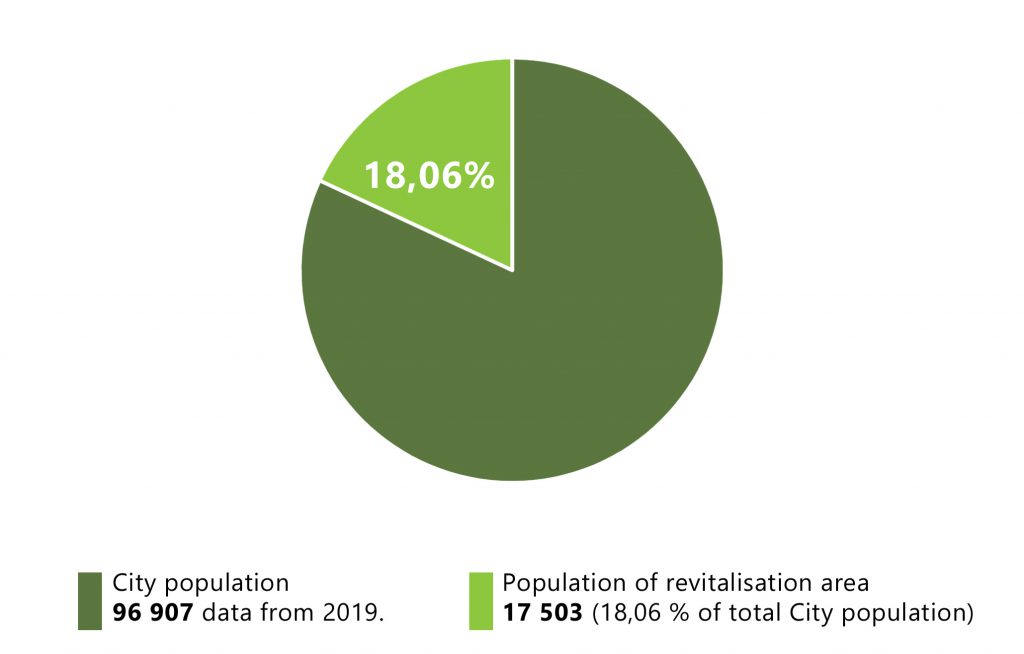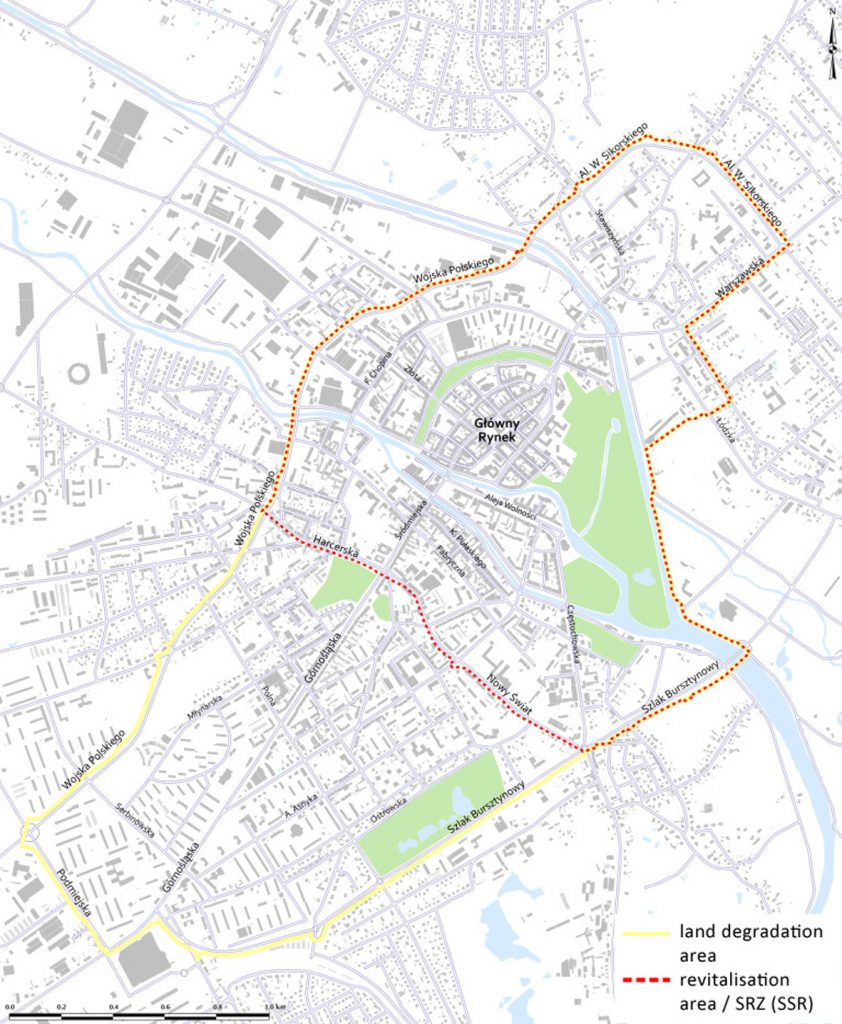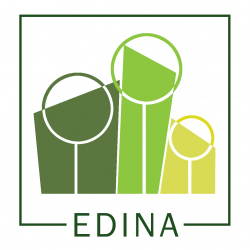KALISZ


Period of revitalisation activities
In 2005, the Local Urban Revitalisation Programme for the Kalisz City was adopted (Resolution of the Municipal Council No XXVIII/482/2005 of 31.03.2005) and extended in 2006 (Resolution No XLVI/698/2006 of 25.05.2006). The program was partially implemented, but a new decision was made to develop a new program according with the Act on Revitalization. The Municipal Revitalization Program of the Kalisz City was established by Resolution No. XLI/512/2017 of the Kalisz City Council on August 21, 2017. In March 2018, the Program was updated by the need to adapt it to requirements of Programming and Supporting Revitalization for the Wielkopolska Regional Operational Program for 2014-2020 (WRPO 2014+), adopted by the Board of the Wielkopolska Region on January 11, 2018. Adaptation of requirements to the Municipal Revitalisation Programme of the City of Kalisz was therefore necessary for the City and other stakeholders to effectively apply for resources for revitalisation regarding the WRPO competitions. According to Article 22 (1) of the Act of 9 October 2015 on revitalisation (i.e. Journal of Laws of 2020, item 802). The City of Kalisz is obliged to carry out, at least once every 3 years, an evaluation of the Programme, in accordance with the monitoring and evaluation system defined in this Programme. This evaluation give an answer to the question if the revitalisation program requires updating / changing. In case of the program needs to be changed, the city mayor applies to the city council to modify it.
Source:
Evaluation of the actuality and degree of execution of the Communal Revitalisation Programme of the city of Kalisz as of 31.12.2019. https://bip.kalisz.pl//ogloszenia/inne/ocena2206.pdf
Characteristics of the revitalisation area problems
• Social sphere
The revitalisation area has a relatively high proportion of elderly people, as the average age in the entire area is relatively high and amounts to approx. 41.5. Additionally, the analysis of the demographic dependency ratio, the value of which over 1 means that in a given area the group of people aged 65 and over is more numerous than the group of people under 19, brings alarming conclusions. Another very important social problem is unemployment. In total, in the entire area the number of unemployed people per 1000 inhabitants is 48. For comparison, the value of this indicator for Kalisz is 25, and for Poland – 41.
Unemployment, as a phenomenon, is often linked to poverty. The highest intensity of this phenomenon occurs in the area of 6 “Jabłkowski-Podgórze”. There the indicators are approximately twice as high as the average for the entire revitalisation area.
Another negative phenomenon affecting the area is crime.
• Spatial and functional sphere
The revitalisation area is a multifunctional area. Its central part is dominated by residential and service functions, while its outskirts are mainly residential.
The area residents highly rate the walking possibilities in Śródmieście, but cycling conditions are much worse, which is related to the insufficient number of bicycle paths, according to the respondents. The availability of parking space is definitely the worst-rated aspect of the spatial and functional sphere of the area.
The technical infrastructure of the area consists of water supply, sewage, gas, energy and heating networks. The assessment of this infrastructure by the residents to a large extent confirms a high quality of services in the revitalisation area. Access to multimedia (TV, Internet) is assessed particularly positively.
The social infrastructure consists of facilities for the provision of social and cultural services, i.e. hospitals, clinics, social welfare homes, community centres, nurseries, kindergartens, universities, etc. The revitalisation area, due to its central location, is very well equipped with social infrastructure, which are, in most of cases, in a good technical condition.
The problem of the area is however a low quality of public areas, as their current development (e.g. Nowy Rynek – New Market Square) does not correspond to the modern guidelines for shaping public spaces. The problem most frequently indicated by the respondents is the lack of adequate number of seats.
• Technical sphere
The revitalisation area is technically unique, as it fully covers the historic urban layout of the city, considered a historic monument. In this area, the average age of buildings exceeds 100 years, and their technical condition is rather bad with a large share of old carbon heating systems and low energy efficiency resulting in large heat losses.
The main threat in the analysed aspect is a poor technical building conditions, including residential ones, which is perceived as the main development problem by all respondents. It should be emphasised that the urban regeneration area is characterised by significant differences in the state. A progressive concentration of the buildings in the worst technical condition in some area quarters should be considered as particularly dangerous. Another challenge for technical activities in the area is a large share of protected historic buildings, which restricts the freedom of investment activities and increases their costs.
• Environmental sphere
The most important natural resources of the revitalisation area are the Prosna River and green areas. Air quality is shaped by several factors, including topography (which affects poor ventilation of Śródmieście, and the so-called low emissions with the related method of heating buildings (local boiler rooms, individual furnaces).
Because of these factors, the highest air pollution related to the concentration of total suspended dust PM 2.5 and PM 10 as well as benzo (a) pyran are noted in the revitalisation area. These exceedances should be considered as very high also nationwide. About 50% of the respondents in all stakeholder groups indicate that air pollution caused by coal stoves is a big or very big problem of the area.
The structure of answers to the question about the nuisance of car traffic is similar. In the urban regeneration area, the problem of exceeding the permissible noise standards, mainly of traffic noise, are also noted. Over 65% of the surveyed city residents emphasise that car traffic in the area is too intense.
Another area problem is pollution and poor condition of surface waters of watercourses, as well as the risk of flooding. Almost 50% of the respondents stated that the condition of the Prosna River in Śródmieście is unsatisfactory, which makes it impossible to use it, e.g. for recreational purposes or for fishing.
Green areas are a very important natural resource in the revitalisation area. Although the residents emphasise their recreational and leisure values, they also point out that they are largely neglected.
It is also necessary to take into account challenges resulting from the need to conduct comprehensive waste management – waste resulting from the combustion of solid fuels is particularly important. Over 40% of respondents say that the city centre is not clean and tidy and that keeping public places clean is a big problem.
• Economic sphere
About 1,200 people operate a business in the urban regeneration area, which means over 65 people per 1,000 inhabitants (average value for the city is approx. 59). The predominant type of economic activity is trade, and legal and financial activities. Despite the area relatively good economic development, entrepreneurs point to a number of problems that they have to face on a daily basis. For people operating in Śródmieście and its vicinity, the most serious difficulties are caused by the expansion of shopping centres (over 74% of responses). Entrepreneurs also indicated a small number of tourists and low wages. In the eyes of the inhabitants, the most important problems of Śródmieście are low wages (over 60% of responses) and the lack of jobs.
When analysing the economic situation of the area, one should undoubtedly pay attention to the tourist potential of the city. One of the indicators used to describe the economic sphere was accommodation provided to tourists in 2006-2014, which amounted to over 540 people per 1,000 inhabitants and was comparable to similar cities. Undoubtedly, the further development of the tourist infrastructure and the strengthening of the tourist potential of Śródmieście and its surroundings should be an important element of the strategy for this part of the city.
However, entrepreneurs were very critical of the city activities in supporting development and promotion of local companies. The main problems indicated were high rents and willingness to buy rented premises by entrepreneurs.
Description of the revitalisation area development character
The urban regeneration area fully covers the historic urban layout of the city, considered a monument, and consequently, the most of the buildings protected in municipal monument register per square km are located within the area. Their average age exceeds 100 years, and their technical condition shows significant deficits with a large share of old carbon heating systems and low energy efficiency resulting in large heat losses. There are 1,791 buildings within the revitalisation area, which is multifunctional. Its central part is dominated by residential and service functions, while its outskirts are mainly residential with accompanying service facilities in mostly separate buildings. The presence of a production and storage function in the southern part of the area should also be mentioned.
The technical infrastructure of the area consists primarily of the water supply, sewage, gas, energy and heating networks. The water supply network was built in the 1940s. Its technical condition in terms of operation does not raise any objections. At the same time, the old (steel) water connections are constantly being replaced. Though, there is no need to build a new water network. The development of the revitalisation area is diverse. In some areas, there are both tenement houses and multi-family houses (blocks). Buildings differ both in the number of storeys (2, 3, 3.5, 4-storeys) and the technical condition (from very good to very bad, in the case of facilities requiring immediate renovation).
Main revitalisation activities
Each respective area designated in the urban regeneration area requires slightly different impacts. There are, however, common projects for the entire area. These include, among others:
– social activation and integration of residents (e.g. by increasing the availability of family assistants for families in need of support, specialised forms of assistance to the elderly, the disabled and children, in order to prevent their marginalisation, integration, activation and building the identity of the local community);
– professional activation of residents (which will result in promoting social economy entities and social employment, increasing the professional activity of the unemployed, enabling entry or return to the labour market, reducing unemployment);
– development of rental housing (development of a housing policy, in line with the long-term resource management programme of the city, as a response to the housing needs of current and future residents of the revitalisation area) – support for the modernisation of historic buildings (e.g. by subsidies for conservation, restoration and construction works for historic buildings entered in the register of monuments;
– support for business entities (e.g. by promoting the area, but also by improving competences in the field of entrepreneurship of students from Kalisz)
Establishment & tools for Special Revitalisation Zone
- Date of establishing the SSR: 2018
- Area of the SSR: revitalisation area designated by Resolution No. XXV / 313/2016 of the Kalisz City Council of June 21, 2016
https://bip.kalisz.pl/uchwaly/2016_25_313.pdf - Tools indicated in the SSR: The establishment zone is related to many legal instruments that may be used by the City of Kalisz, including: the right of first purchase, the use of a special procedure of public procurement, and the possibility of granting subsidies for construction works consisting in renovation or reconstruction as well as conservation and restoration works regarding to buildings not registered to the index of historic monuments for owners or perpetual users of real estate located within the SSR.
- Level of co-financing in the SSR: According to the Resolution No. XXV/407/2020 OF THE CITY COUNCIL OF KALISZ from June 25, 2020 on the amendment of the Resolution No. LIII/719/2018 of the Kalisz City Council of 24th May 2018 on the establishment of a Special Revitalisation Zone in the revitalisation area of the Kalisz City, the subsidy from the budget of the City of Kalisz in the scope referred to in Article 77 points 1-6 of the Act on the protection and care of historical monuments may be granted in an amount not exceeding 20% of the necessary works for construction.
- Financed necessary works: works contained in the Act.
- Procedure of announcing the call for grants applications in the SSR: according to the resolution No. VII/91/2019 of the CITY COUNCIL OF KALISZ from 28th March 2019 on changing the resolution No. LIII/719/2018 of the Council of the City Kalisz from 24th May 2018 on establishing a Special Revitalisation Zone in the revitalisation area of the City of Kalisz, recruitment of applications for granting a subsidy takes place from 1 to 30 September of the year preceding the year in which the subsidy is to be granted.
- Deadline for submitting grant applications in the Special Revitalisation Zone: every time specified in the call announcement.
- Membership evaluation commission: appointed via an ordinance, composed of : employees of the city office, Kalisz City Council and members of the Revitalisation Committee of the City of Kalisz
- Deadline for signing the agreement from notification of grant award: 30 days
- Number of announced calls for applications: 5
- Number of subsidies awarded in respective calls: 2019 – 9, 2020 – 13, 2021 – 12, 2022 – 12
The Mayor of the City of Kalisz announced an open call for subsidies applications in 2021, link to the announcement: https://rewitalizacjakalisz.pl/?p=7008
Applications should be submitted from 1st to 30th September 2020. - Link to the resolution on the SSR: http://g.ekspert.infor.pl/p/_dane/akty_pdf/U84/2018/100/4418.pdf
- Link to the publication promoting the SSR prepared by the city:
https://www.kalisz.pl/dla-mieszkanca/rewitalizacja/specjalna-strefa-rewitalizacji https://rewitalizacjakalisz.pl/
